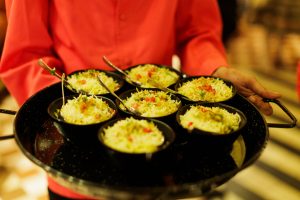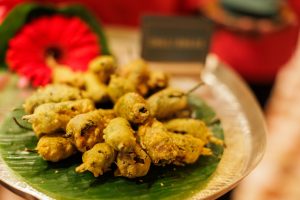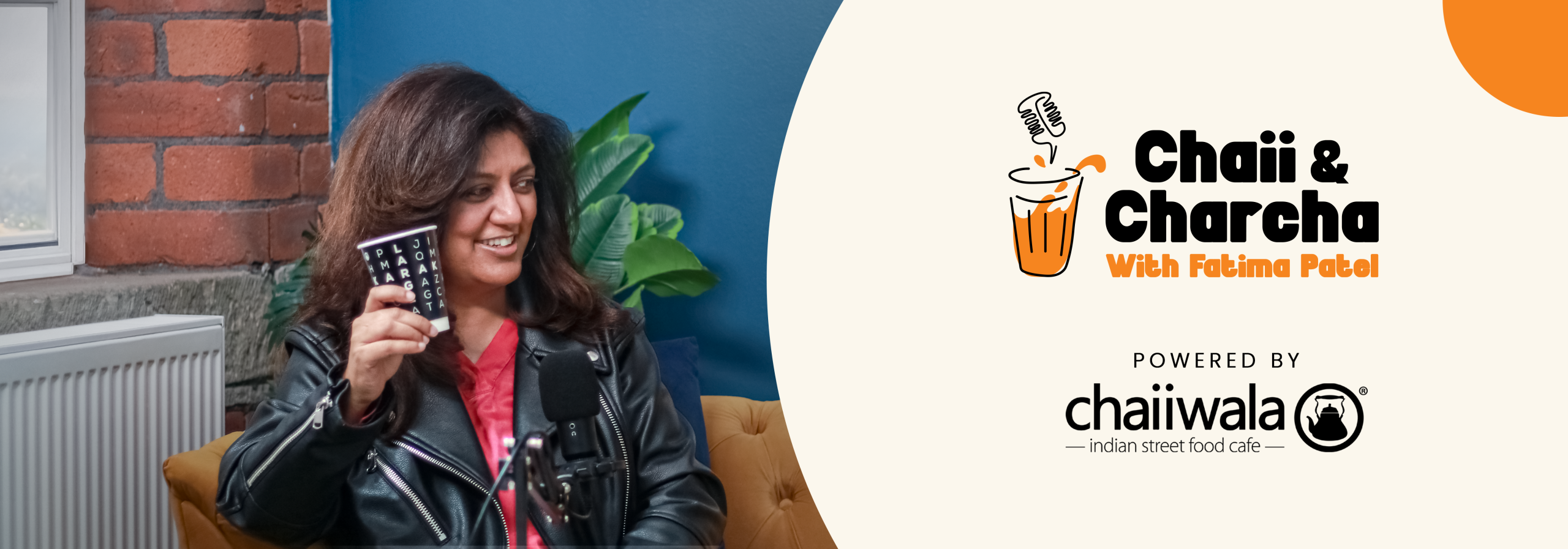Mumbai-born Camellia Panjabi MBE, who divides her time between India and London championing the many wonders of Indian food through her restaurants and writings, has decided to shine the spotlight exclusively on veggies with her latest cookbook.
Vegetables: The Indian Way is the result of a 20-year labour of love, collecting and perfecting recipes and doing a deep dive into each ingredient’s nutritional value and wellness benefits. Crafted as “a definitive collection of recipes from the simple to the special”, the vibrant cookbook which hit the stands across the UK this month is bursting with 120 recipes that reflect the sheer diversity of Indian cuisine – rooted in vegetarianism long before plant-based eating rose up the popularity charts around the world.
“I noticed that information about fibre, nutrition, antioxidants, gut microbiomes were all in different places. I thought why not put it all together and make it more user-friendly,” explains Panjabi, as she set about tracing the origins of each vegetable before it is transformed into a flavoursome dish.
“Why not give each vegetable a character, I thought. So, I started by counting around 30 vegetables before setting about to write everything about each, including all the health aspects and create a story,” she shares.

This marked the starting point of a deliciously layered journey during which the bestselling author of ‘50 Best Curries of India’ uncovered many hidden gems. She discovered the many gut-friendly benefits of soaking lentils (dal) and fermenting batters and dug deep into the anti-inflammatory power of spices such as turmeric (haldi) and fenugreek (methee). The result is a cookbook that blends ancient food wisdom based on the tenets of Ayurveda with modern-day nutritional advice, with the chapters finally taking shape when the author found herself in London over the Covid-19 pandemic lockdown in 2020.
Panjabi notes: “The book is a distillation of what I have observed and learnt, but this time interestingly, since I wrote it while living in London, I began to see Indian cuisine from an international perspective.
“Included in it is the Indian way of looking at ingredients and their background story. This is a selection of recipes from all over India, covering as many varieties of vegetables and lentils as possible, as well as savoury dishes made from fruits, and dishes from times past and times present. It includes favourite home dishes, traditional recipes, street food specials, Indo-Chinese favourites, sweets made from these vegetables and lentils, some modern Indian-style vegetable recipes and some new ones I have created.”
The structure of the book sees recipes divided across four categories of Vegetables…
- grown under the ground
- grown under water
- grown on the ground
- grown on shrubs and vines
- grown on trees
The format highlights how Indian eating consists of combining a variety of foods, with meal combinations incorporating leafy greens in some form. Besides lentils as a protein-booster, ingredients such as ghee (traditional cooking fat) and accompanying essentials such as grains (wheat, rice and millets) and spices – from carom seeds, chillies, cinnamon and cassia to cloves, coriander seeds and leaves as well as cumin, peppercorns and turmeric – are also explored in considerable detail.
The recipes follow a step-by-step cooking pattern to cater to any level of cooking expertise and include some well-known classics as well as lesser-known veggie delights. For instance, carrots are explored from the humble Gajar Mutter (Carrots with Peas) to the richer Gajar Halwa (Carrot Halwa) dessert and a more unusual yogurt dish named Carrot Raita with Burnt Garlic.
The underlying message is that vegetables are essential not just for flavour and sustainability, but for metabolic health, gut function and longevity. Along the way, Panjabi demonstrates how traditional Indian cooking techniques like tempering (tadka), sprouting and spice layering can transform simple vegetables into powerhouse meals.
“Western science says ghee causes cholesterol, while many Indians go on believing in the magnificence of ghee. No scientist would answer that conundrum, so I asked my mother’s guru, who had been a scientist, and he explained that both are true: in the old days, ghee was always made by converting milk into yogurt, which will not cause cholesterol. But in modern times, the shortcut is, you make ghee from milk fat or cream, which will cause cholesterol,” reveals Panjabi.
Many such scientific insights from experts at Indian food institutes and Ayurvedic specialists are backed up with bespoke photography by Jonathan Gregson to create a cookbook that is designed as a handy health manual, grounded in culture and taste.

As someone who read Economics at the University of Cambridge, Panjabi became the first Indian management trainee at Unilever before making a mark in hospitality as Marketing Director of the Taj Group of hotels – where she was the first female board director of a public company in India. She went on to shape Indian fine dining globally with the launch of London’s iconic Bombay Brasserie restaurant and then overseeing historic eateries such as Veeraswamy and Chutney Mary. Her championing of Indian cuisine continued as the MW Eat hospitality group, steered by her sister Namita and brother-in-law Ranjit Mathrani, went on to make a mark with a chain of popular Masala Zone restaurants – with the newest branch at Piccadilly Circus playing host to her London book launch recently. In 2013, Camellia Panjabi was awarded an MBE by Queen Elizabeth II for services to the hospitality industry.
“This book captures two aspects of Camellia’s character: one is the incredible attention to rigour and intellectual curiosity, and the other is, never giving up. The remarkable thing was that she did her research for a whole year just using her smartphone and making copious notes,” says Mathrani, a fellow Cambridge University alumnus.
“Nothing stands in her path. She has got an incredible ability to get her way, to overcome preconceptions with her vision and determination. And now she has set a goal of hitting a million copies in five years and I know she is not going to give up,” he adds.
The introductory chapters of ‘Vegetables: The Indian Way’ trace the roots of the explosion of Indian food in the UK and beyond over the years. The author reflects on how eating out is quite a nascent phenomenon for Indians, who rarely sought out vegetarian dishes outside of their homes.
She writes: “Since the turn of this century, Indian food has seen a change as Indian vegetarians who usually shunned eating in non-vegetarian restaurants have begun to eat out, a new Indian middle class has become more experimental, and the digital world has ignited their interest in different cuisines; there is a new generation of restaurant entrepreneurs drawn from a wide spectrum, international chefs have become involved, and a new culinary scene is emerging.
“There is innovation in Indian food, fusion of Indian and other cuisines, and a
makeover of Indian street foods as served in restaurants. And the popular eating places are now not only in the upscale sector, but largely in the informal stand-alone eating-out sector.”
Her publisher, Ione Walder, believes the increasing intake of vegetarian food worldwide and a discernible interest in veggie dishes from all regions of India slowly but surely taking hold makes this new cookbook particularly well-timed.
‘Vegetables: The Indian Way’, published by Penguin Michael Joseph, released in the UK in September 2025.




